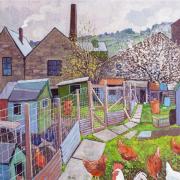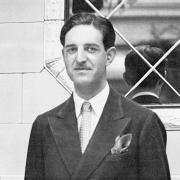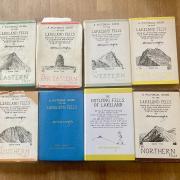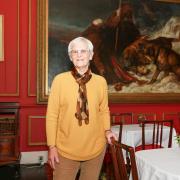Deaths, poverty, ill-health and moral decay – the problems that inspired Lancastrians to start the temperance movement'
This summer will be filled with people lying drunk in the streets, losing their homes, being confined to madhouses and generally taking the road to ruin – at least, that’s the case if you visit exhibitions in Manchester and Preston called Demon Drink?
Many of us will have heard of ‘signing the pledge’ and groups such as the Band of Hope and the Rechabites. But few people now remember why temperance was so important to millions of people. If temperance was the solution, what was the problem?
As a reaction to the destructive effects of cheap gin, the Beer Act of 1830 was meant to encourage beer drinking as a healthier alternative. But the effect was disastrous, especially in the crowded industrial regions. We have a newspaper account of the effect in Blackburn:
‘Monday last (October 8th, 1830) being the day on which houses licensed under the Beer Bill commenced to sell beer, the most disgraceful scenes of drunkenness were witnessed in different parts of the town from early morn to midnight.
‘The drunkenness and profligacy introduced by this measure exceeds belief. Men, women, and children in the evening were in the streets in a disgusting state of intoxication. Six, stripped of all but their trousers, fought till blood streamed from their faces.’
A London paper described Blackburn as the most beery town in the world,’ but other Lancashire communities were not far behind. (These quotations are from W. E. Moss’s commemorative history of the Temperance movement in Blackburn, from 1931)
Drink was a national problem, and temperance societies which encouraged moderation sprang up throughout the country. But in 1832, Joseph Livesey and six companions made history in Preston, when they signed a pledge to abstain from all forms of intoxicating liquor – soon known as ‘teetotalism.’
Livesey himself - aided by pairs of ‘apostles’ - spread the message southwards throughout the country. Preston was referred to as ‘Jerusalem,’ and the word ‘temperance’ soon meant, not moderation, but drinking no alcohol at all.
Livesey argued that it was the only safe way, comparing moderation to a dangerous bridge or a slippery slope. In Salford, a group of teetotal working men set up a friendly society in 1835 and named it after a non-drinking Biblical tribe – and the famous and financially powerful Independent Order of Rechabites was born.
The north west was not only the birthplace of the temperance movement, but its heartland, and huge numbers are recorded as attending meetings, lantern shows, concerts and processions. Indeed, we still have the only surviving Temperance Bar, Fitzpatrick’s of Rawtenstall.
Temperance lingered longer here, too. The children’s group, the Band of Hope for example, was recording increases in its Lancashire and Cheshire membership well after the national movement had begun to decline.
So it is particularly appropriate that the region should be involved in another temperance ‘first.’ Until February, the People’s History Museum in Manchester is hosting the first major exhibition about the history of the temperance movement in Britain.
Preston will have its own ‘pop-up’ exhibition in St George’s Centre, to coincide with the main Guild events, from the last week in August to the first week in September. And anyone can visit the virtual exhibition from the end of July, at www.demon.drink.co.uk.
This is all good news for the Preston academic who studies the temperance movement. ‘Temperance is in danger of being forgotten, yet it changed the lives of millions of our ancestors,’ said historian Dr. Annemarie McAllister, from UCLan. She is directing the Heritage Lottery-funded project ‘Temperance and the Working Class’, which includes the exhibitions, as well as an ongoing oral history project, collecting and preserving memories from local people. And perhaps this topic is not only of historical interest given some of our social problems today.


























